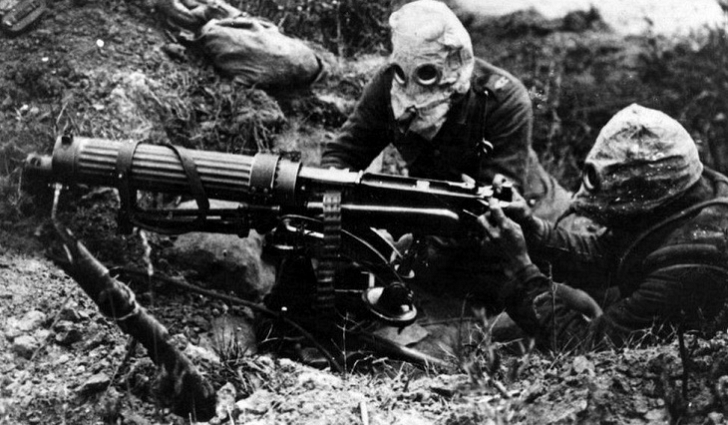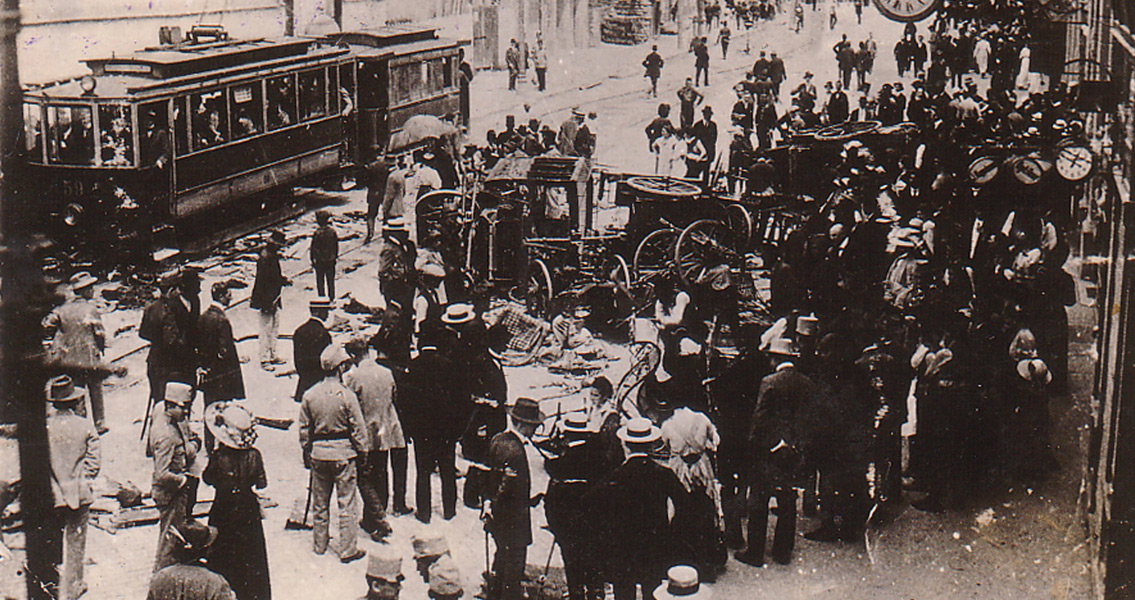DER KRIEG: The War to End All Wars

Gas hoods were a necessity in the muddy squalor of the trenches. Gas attacks were common, and choking clouds would scar the lungs and ravage exposed soft tissue.
The beginnings of World War 1 began with a small and quite literal bang. Tensions in the Balkans over Austro-Hungarian rule would explode when Franz Ferdinand would arrive in Sarajevo to inspect Imperial Armed forces in Bosnia-Herzegovina. The Black Hand, a terrorist organization dedicated to fighting for Bosnian independence would equip a small group with firearms and explosives to make an assassination bid on the Archduke.
Ferdinand and his wife Sophie’s car would arrive at a street corner with surprisingly little security to be met by Gavrilo Princip and his cohort, who had traveled to intercept them. Both were shot in their car, dying within the hour. The sadly ironic last words of Franz would be “it’s nothing. It’s nothing”. The public reaction was almost nil, but it would have an almost 9/11-like effect on the political climate of Vienna. Anti-Serb riots would be encouraged by the Austrian authorities as they pinned the assassination on the Serbian government, not the small group of armed students who actually carried out the assassination. The 28th of July, 1914 would see Austria officially declare war on Serbia, beginning a cascade of wartime declarations as allies were forced to back up other allies being pulled in. Russia was allied with Serbia, so they would have to declare war on Austria in response. Germany, as Austria’s ally moved to aid in the invasion, not expecting Russia to actually follow suit and help. Russia would call on its ally France to intervene, and so on and so forth.

Perhaps one of the most impactful assassinations in human history, the murder of Austrian Archduke and heir to the throne Franz Ferdinand would catalyze one of the singular most devastating acts of warfare in human history.
Germany would be forced to respond, with Kaiser Wilhem making counter declarations on both Russia and France within the year. His German army would pour into Belgium according to their Schleiffen Plan, prompting Britain to send them an ultimatum. Withdraw, or suffer the consequences. Their ultimatum was spurned, setting off a declaration of war from Great Britain which would in turn trigger a declaration of war from Japan, who had signed as Britain’s ally in 1902. 1914 would see the Battle of Tannenburg, where the German army used their superior rail lines to intercept and surround the Russian army before their commander could react, effectively surrounding them and causing a massive defeat. The Russian army would lose thousands upon thousands of men, with over 125,000 being taken prisoner. This would swiftly trigger the Battle of the Masurian Lakes, while the Turkish Ottoman Empire would be pulled into the war after aided the Germans in a naval bombardment of Russian forces in November. This would trigger counter declarations from all allied nations against the Ottoman Empire, and the Germans would begin advancing into France through Belgium, kicking off many of the major offensives of 1915 and laying the groundwork for some of the most horrific battles of the century.

A depiction of the ensuing German zeppelin raids against the English coastline.
Lecture Reflection:
We had to do a pretty condensed run through the lecture on Wednesday, but we did get to dive through some of the American greats of architecture (such as Frank Lloyd Wright), not only covering his work in buildings, but also publishing. We also looked at Behrens and his influence from MacIntosh of Scotland and The Four, with his Art Nouveau influences and early branding work. I love the straightforward and distinct style he presented for these, there’s so little of the branding lifestyle bloat we see in modern advertising when we step back to this era, it’s kind of refreshing!
Sourcing
https://www.britannica.com/event/World-War-I
https://www.history.com/topics/world-war-i/outbreak-of-world-war-i
https://www.history.com/topics/world-war-i/world-war-i-history
https://www.historyonthenet.com/world-war-1-comprehensive-overview-great-war/
Images
https://www.historyonthenet.com/world-war-1-comprehensive-overview-great-war/
https://www.rte.ie/centuryireland/index.php/articles/zeppelins-continue-attacks-on-england

Leave a Reply